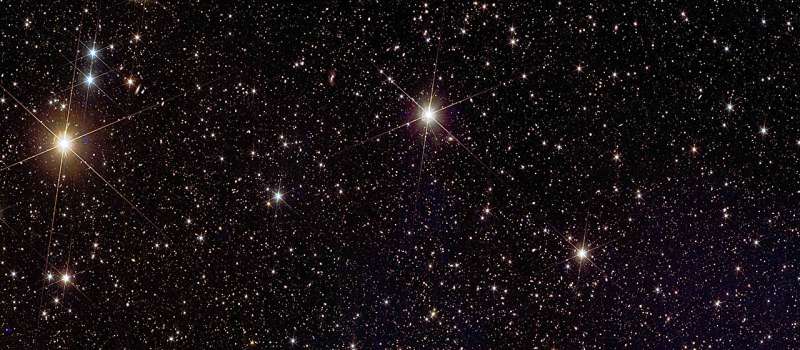
November 11, 2024 by University of Geneva
Collected at: https://phys.org/news/2024-11-theory-team-einstein-distortion-space.html
Why is the expansion of our universe accelerating? Twenty-five years after its discovery, this phenomenon remains one of the greatest scientific mysteries. Solving it involves testing the fundamental laws of physics, including Albert Einstein’s theory of general relativity.
According to Einstein’s theory, the universe is deformed by matter, like a large, flexible sheet. These deformations, caused by the gravity of celestial bodies, are called “gravitational wells.”
When light passes through this irregular framework, its trajectory is bent by these wells, similar to the effect of a glass lens. However, in this case, it is gravity, not glass, that bends the light. This phenomenon is known as “gravitational lensing.”
Observing it provides insights into the components, history, and expansion of the universe. Its first measurement, taken during a solar eclipse in 1919, confirmed Einstein’s theory, which predicted a light deflection twice as large as that predicted by Isaac Newton. This difference arises from Einstein’s introduction of a key new element: the deformation of time, in addition to the deformation of space, to achieve the exact curvature of light.
Are these equations still valid at the edge of the universe? This question is being explored by many scientists seeking to quantify the density of matter in the cosmos and to understand the acceleration of its expansion. Using data from the Dark Energy Survey—a project mapping the shapes of hundreds of millions of galaxies—a team from the universities of Geneva (UNIGE) and Toulouse III—Paul Sabatier is providing new insights.
“Until now, Dark Energy Survey data have been used to measure the distribution of matter in the universe. In our study, we used this data to directly measure the distortion of time and space, enabling us to compare our findings with Einstein’s predictions,” says Camille Bonvin, associate professor in the Department of Theoretical Physics at the UNIGE Faculty of Science, who led the research, now published in Nature Communications.
A slight discrepancy
The Dark Energy Survey data allow scientists to look deep into space and, therefore, far into the past. The French-Swiss team analyzed 100 million galaxies at four different points in the universe’s history: 3.5, 5, 6, and 7 billion years ago. These measurements revealed how gravitational wells have evolved over time, covering more than half of the cosmos’s history.
“We discovered that in the distant past—6 and 7 billion years ago—the depth of the wells aligns well with Einstein’s predictions. However, closer to today, 3.5 and 5 billion years ago, they are slightly shallower than predicted by Einstein,” reveals Isaac Tutusaus, assistant astronomer at the Institute of Research in Astrophysics and Planetology (IRAP/OMP) at université Toulouse III—Paul Sabatier and the study’s lead author.
It is also during this period, closer to today, that the expansion of the universe began to accelerate. Therefore, the answer to two phenomena—the acceleration of the universe and the slower growth of gravitational wells—may be the same: gravity could operate under different physical laws at large scales than those predicted by Einstein.
Challenging Einstein?
“Our results show that Einstein’s predictions have an incompatibility of 3 sigma with measurements. In the language of physics, such an incompatibility threshold arouses our interest and calls for further investigations. But this incompatibility is not large enough, at this stage, to invalidate Einstein’s theory. For that to happen, we would need to reach a threshold of 5 sigma.
“It is therefore essential to have more precise measurements to confirm or refute these initial results, and to find out whether this theory remains valid in our universe, at very large distances,” says Nastassia Grimm, postdoctoral researcher in the Department of Theoretical Physics at UNIGE and co-author of the study.
The team is preparing to analyze new data from the Euclid space telescope, launched a year ago. As Euclid observes the universe from space, its measurements of gravitational lensing will be significantly more precise. Additionally, it is expected to observe about 1.5 billion galaxies within the six years of the mission. This will enable more accurate measurements of space-time distortions, allowing us to look further back in time and ultimately test Einstein’s equations.
More information: Isaac Tutusaus et al, Measurement of the Weyl potential evolution from the first three years of dark energy survey data, Nature Communications (2024). DOI: 10.1038/s41467-024-53363-6
Journal information: Nature Communications

Leave a Reply